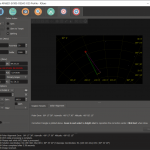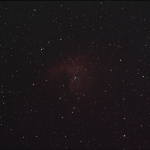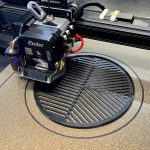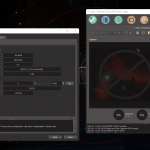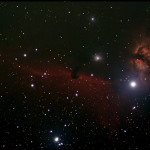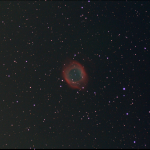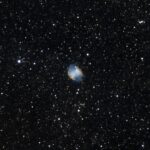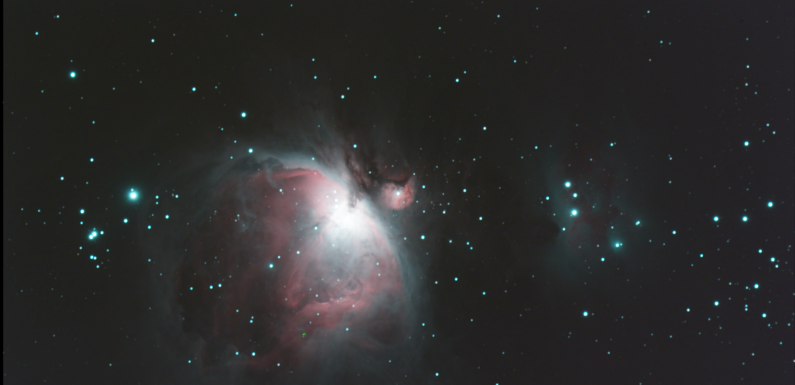
Wow! Three nice clear nights in a row. Temperatures were warmer for this session, 55 F and clear at dark. Temperatures dropped a bit during the session but never below freezing. The Moon was up and waxing at about 50%. I decided to observe some nebula, I started off with my standard, the SVBONY UV/IR filter, in the filter drawer, but switched to the ZWO Duo-Band filter once I decided I was going to be observing only nebula during this EAA session.
I uncovered the scope and connected the gear up just before dark. I did another visual polar alignment. I ran the autofocus routine and set focus, it was still pretty close moving out less than 100 steps. I did not have any issues with gear connection, everything connected up in INDI and Ekos as it should. Ran the quick align on the mount and was off to observing.
The EAA images in this post were capture with my ZWO ASI294MC Pro cooled to -10 C through my SVBONY SV503 102ED scope with 0.8 Focal Reducer and a ZWO Duo-Band filter. Focus was obtained with the ZWO EAF using the Ekos Focus Module. The images were live stacked using SharpCap Pro. The mount and cameras are remotely controlled with KStars/Ekos/INDI running on an Astroberry Raspberry Pi. The images have been resized (80% of original) and/or cropped for file size but otherwise appear just as I observed them.
IC 805, the Heart Nebula, an emission nebula in the constellation of Cassiopeia. This is a live stack of 10 x 30 second and 10 x 60 second exposures with the IR/UV Cut Filter. I switched in the ZWO Duo-Band, re-focused, and added 30 x 60 second exposures to the live stack. Gain was 121, 8 offset, and bin 2×2.
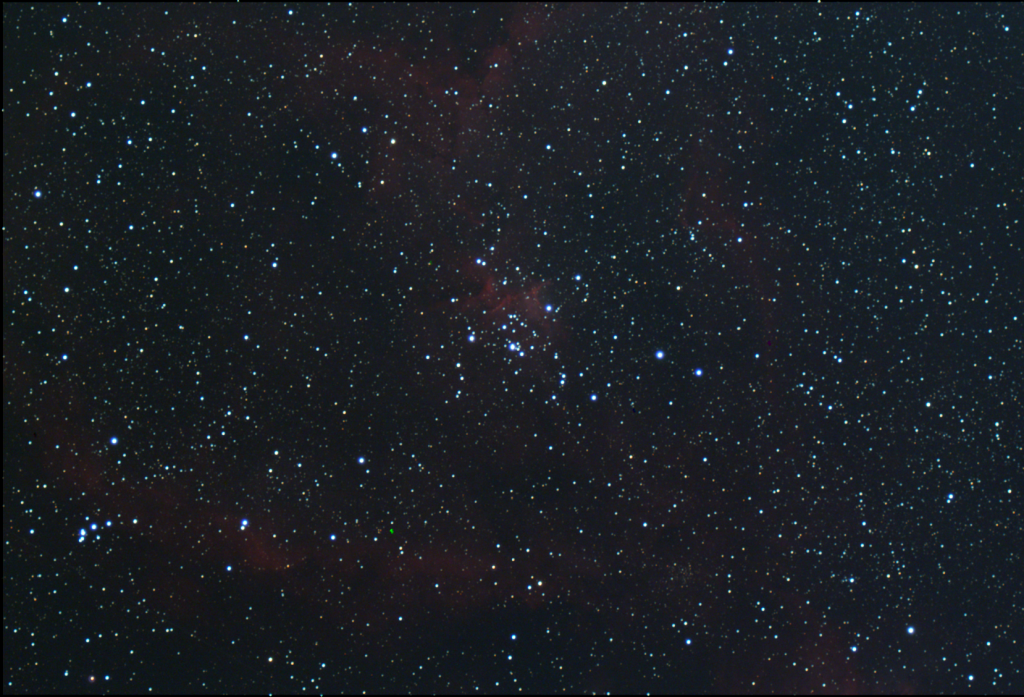
IC 1871 is a small emission nebula in the constellation of Cassiopeia. This is a live stack of 10 x 30 second and 25 x 60 second exposures at 121 gain, 8 offset, and bin 2×2.
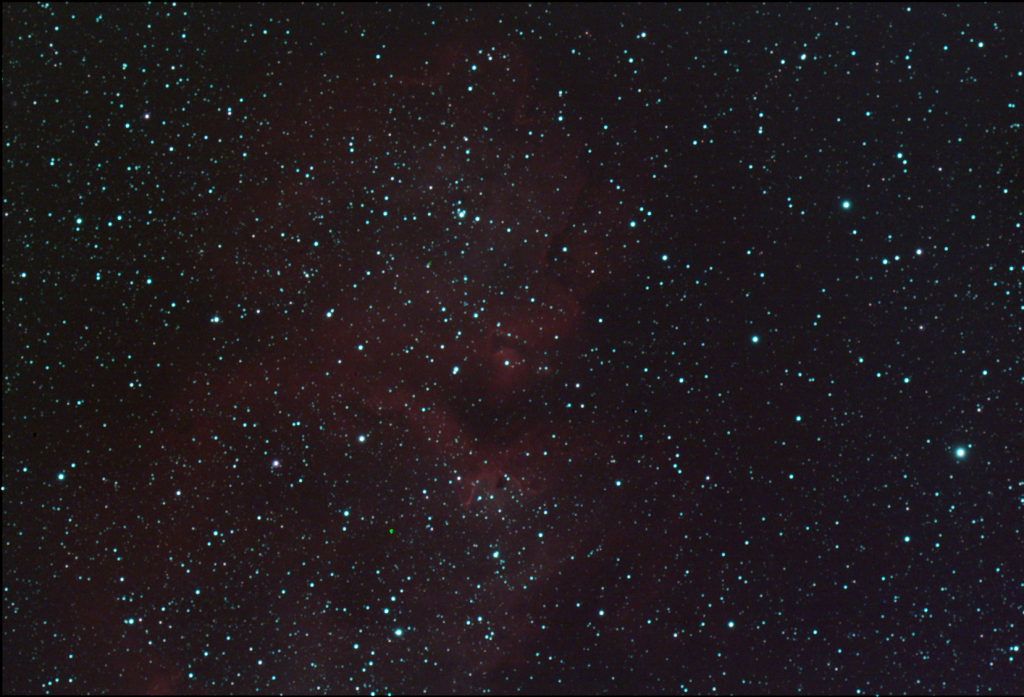
IC 405, the Flaming Star Nebula, is a reflection and emission nebula in the constellation of Auriga. This is a live stack of 10 x 30 second and 25 x 60 second exposures at 121 gain, 8 offset, and bin 2×2.
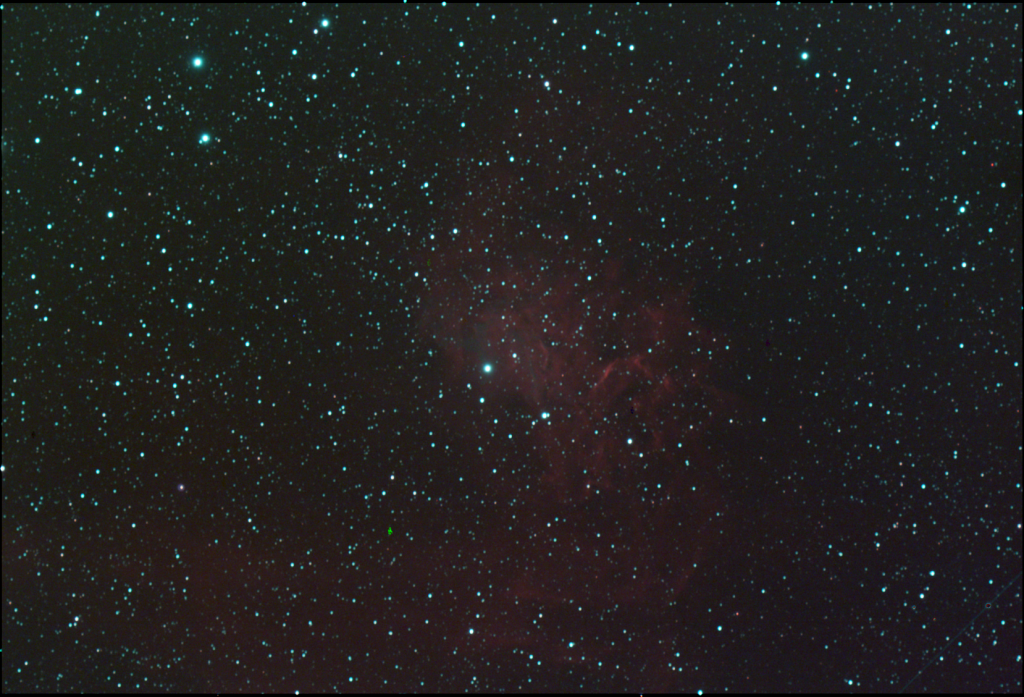
IC 443, the Jellyfish Nebula, is a supernova remnant in the constellation Gemini. This is a live stack of 10 x 30 second and 25 x 60 second exposures at 121 gain, 8 offset, and bin 2×2.
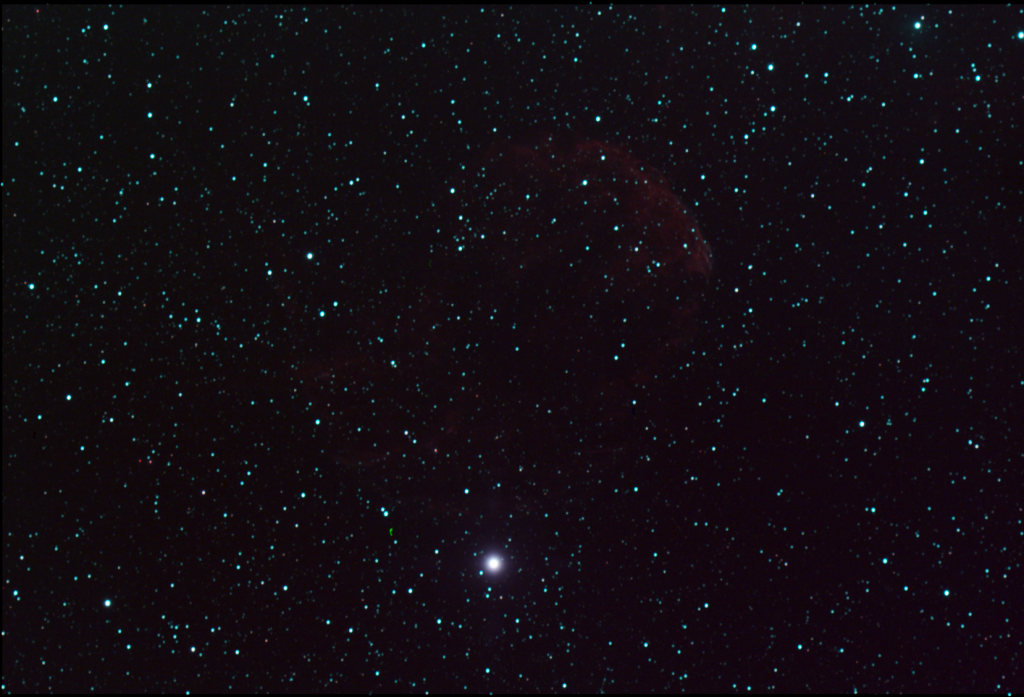
NGC 2174, the Monkey Head Nebula, is an emission nebula in the constellation of Orion. This is a live stack of 10 x 30 second and 25 x 60 second exposures at 121 gain, 8 offset, and bin 2×2.
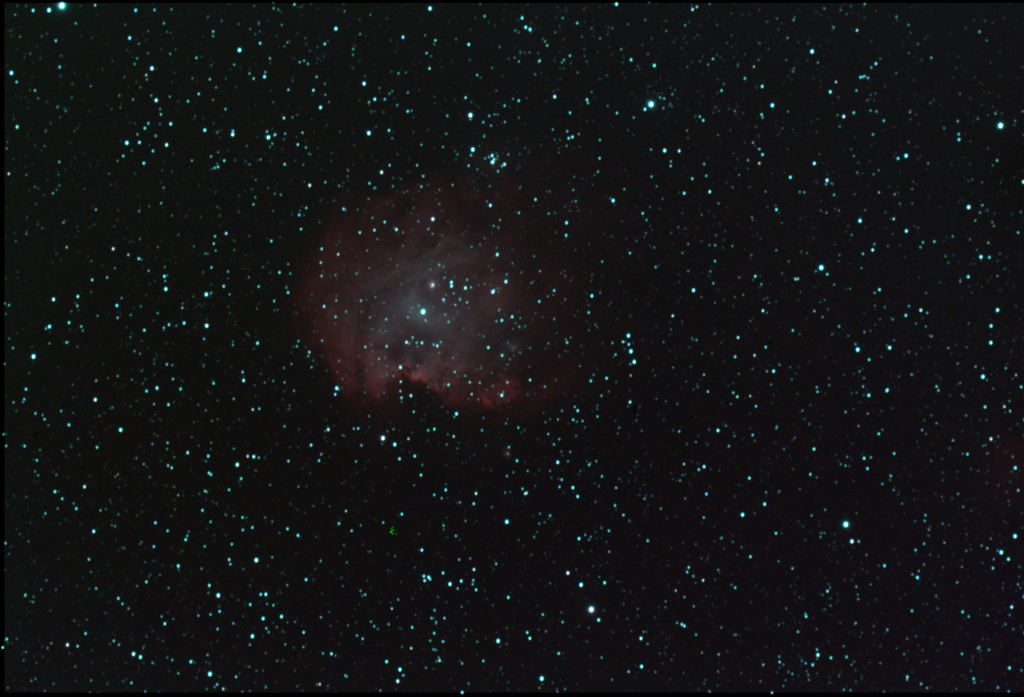
IC 434, The Horsehead Nebula, in the constellation of Orion. This is a live stack of 10 x 30 second and 25 x 60 second exposures at 121 gain, 8 offset, and bin 2×2.
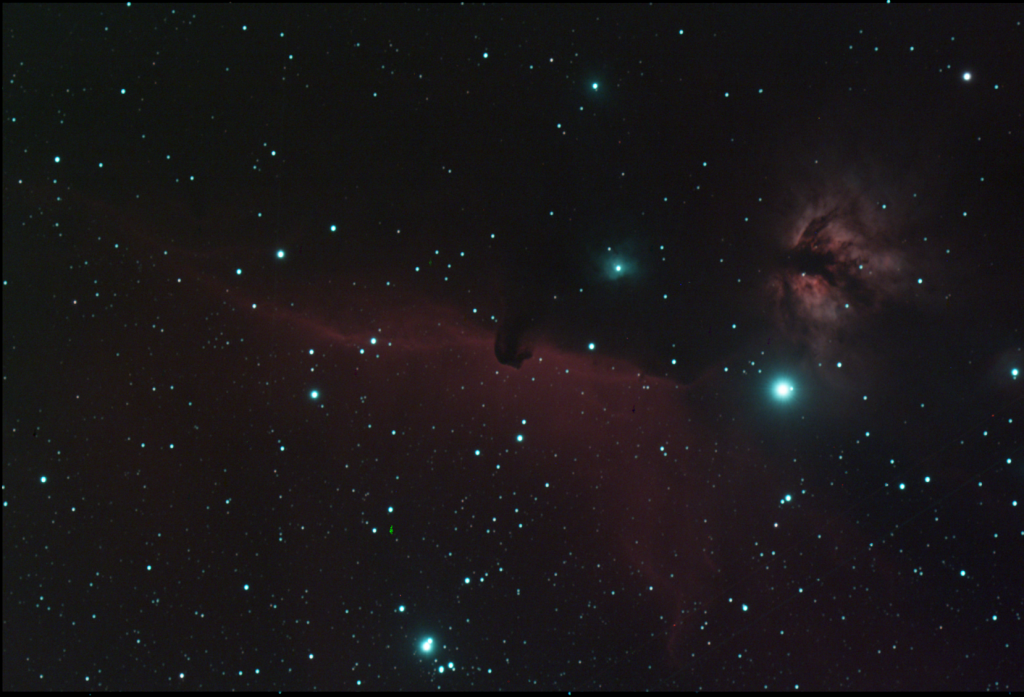
NGC 2024, the Flame Nebula, is to the right and the small reflection nebula NGC 2023 is just up and right from center.
De Mairan’s Nebula (Messier 43) and the Great Orion Nebula (Messier 42) in the constellation of Orion. This is a live stack of 40 x 30 second exposures at 121 gain, 8 offset, and bin 2×2.
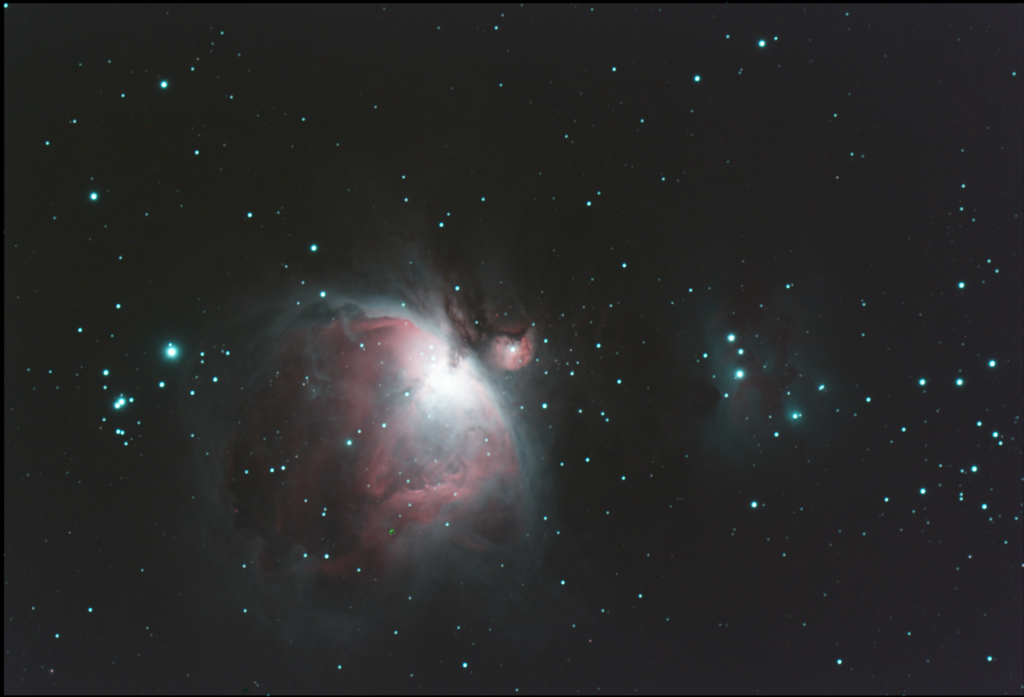
Messier 43 is in the center, Messier 42 is just to the left, and SH2-279, the Running Man Nebula is to the right of Messier 43.
There is something wrong with my darks, or I just need new ones due to the temperature outside temperature difference (the camera is cooled to -10 C). The dark is handling the amp glow just fine, but there are a few hot pixels.
I EAA observed the Orion Nebula, the Horsehead Nebula, Jellyfish Nebula, and the Monkey Head Nebula, without the duo-band filter on 12/16/2022. I think I was able to resolve more detail without it. The ZWO Duo-band filter may be useful for astrophotography work but for EAA I think I’ll just stick to the IR/Cut filter for now. I may try out a LP/UHC/CLS filter and see what I can see with one of those.
I packed up and covered the scope at around 10:30 PM. The past few nights have been great EAA nights and I have enjoyed getting the opportunity to observe.


